We made brioche for Day 4 of the Bread Baker’s Apprentice Challenge.
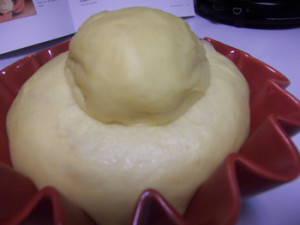
Brioche is an enriched bread made with a good number of eggs and lots of butter. There are three different versions of brioche to choose from in the book depending on the amount of butter-to-flour ratio you want to use.
It seems that a lot of the other bakers in the challenge are making the rich man’s or middle class version so I chose to make the poor man’s version. Somebody needs to look out for the little guy…might as well be me. Plus, this version uses less butter and eggs than the other two versions so it’s a more practical bread in my opinion. It’s still very tasty and rich but not overly so.
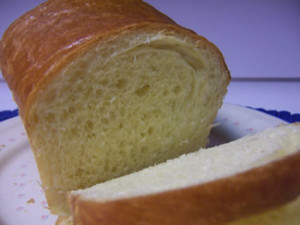
I’ve made the Rich Man’s Brioche before from the recipe in Peter Reinharts’ Crust and Crumb. If you would like to see the results, check out this post. I actually think I like the poor man’s version better. I’ll have to try the middle class version next time so I can compare all three.
- “Brioches originated as soft and light white loaves, enriched with butter and eggs, much much less so than those we know today. They were baked without moulds. Looking at Chardin’s beautiful paintings of brioches you can see that he has quite clearly defined the notches round the base of his cottage-loaf-shaped confections, which are handsome and tall but not tidy like a moulded cake. So I think that in the eighteenth century, and at the time of that poor, foolish Marie Antoinette is supposed to have said, when told that the people of Paris were rioting for bread, qu’ils manget de al brioche’, the composition of the cake must have been simply that of an enriched bread much like that of our own Bath buns and Sally Lunns, so made at that period without benefit of moulds or tins, although paper bands were sometimes wrapped round them for baking. Certainly it would not be possible to bake today’s liquid brioche mixture or crust for a fillet of beef or a large sausage then the brioche mixture is made with fewer eggs and less butter, or it would be impossible to handle.” —English Bread and Yeast Cookery, Elizabeth David [Penguin:Middlesex] 1977 (p. 497)
According to Mr. Reinhart, there are countless formula variations for this bread. Some versions are immediately fermented and then shaped and baked, while some require overnight chilling. The poor man’s version requires a sponge, but no overnight chilling. It’s a very easy dough to work with.
I like the flour to butter ratio in this version. The other versions are almost too buttery for me. Mostly because when I consider all that butter, I think about what it would do to my arteries. However, anyway you choose to make it, this is a very delicious bread.
The poor man’s version can be made in one day and the dough doesn’t require refrigeration before shaping. A definite plus in my book!
The sponge
The dough
Making the Brioche
When placing the shaped brioche into the fluted mold, you only fill the molds 2/3 full. The proofed dough should almost fill the mold or loaf pans.
Then, you’ll gently brush the top of the loaves with egg wash.
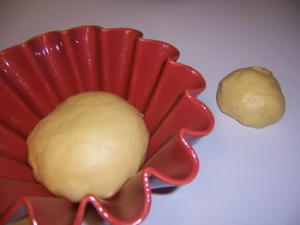 |
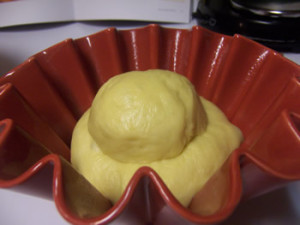 |
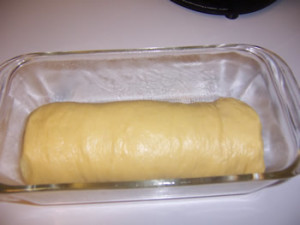 |
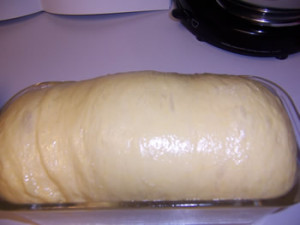 |
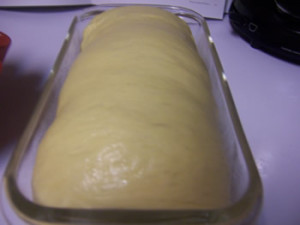 |
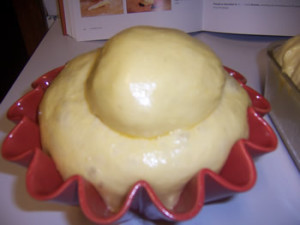 |
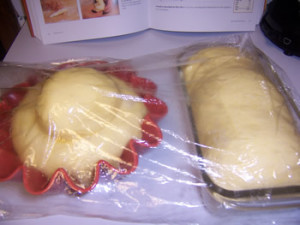 |
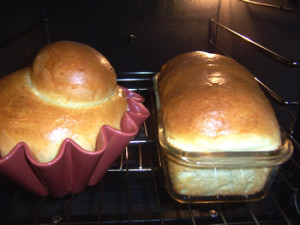 |
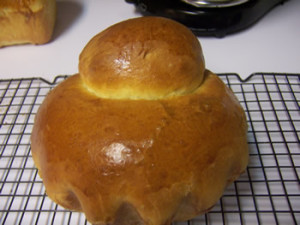 |
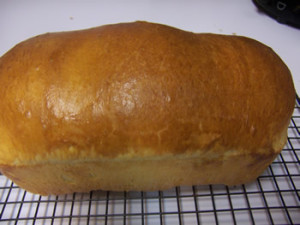 |
I decided to freeze the fluted brioche. We sliced the sandwich loaf. In fact, it’s almost gone.
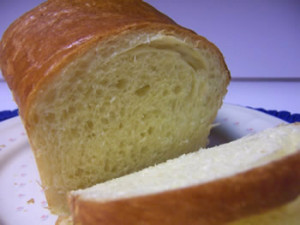
We had our slices toasted with butter and cinnamon sugar. Boy was it good! My taste tester says it tastes like a croissant. I’m sure it would also taste good toasted with jam.
Thanks for joining me this week in the Bread Baker’s Apprentice Challenge. Next time, we’re making Casatiello.
Happy Baking!
Cathy
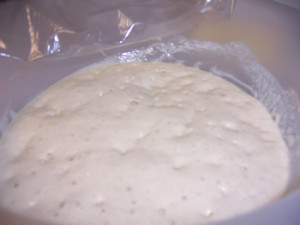
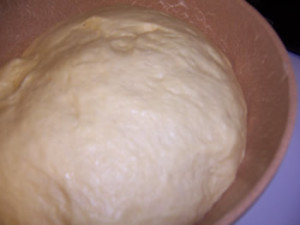
susies1955 says
Ok how do you get your breads so perfect looking? 🙂 Great job.
Love your photos and your write up,
Susie
PS…….your Anadama link seems to be broken.
Cathy (breadexperience) says
Thanks Susie! I’m getting into this challenge and learning more every time.
I’m glad you like the photos. I’m definitely not a photographer like some of the other participants.
Oops! I’ll check out the Anadama link.
Thanks for keeping me informed.
Cathy